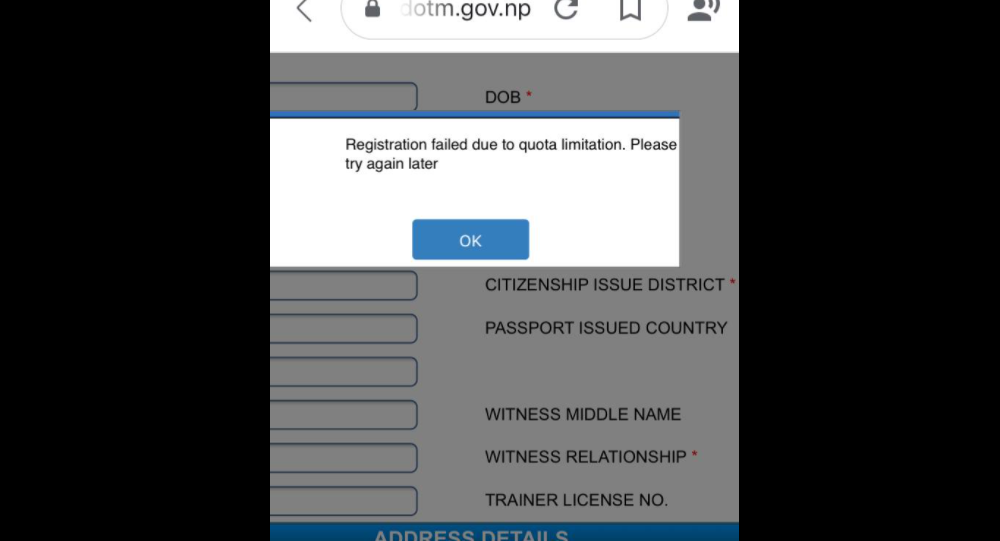
BSc.CSIT 2nd Semester Old Questions
Subject: Microprocessor
- Subject: Microprocessor
- Year: 2065 BSc.CSIT 2nd Semester Microprocessor Old Questions
- BSc.CSIT 2nd Semester Microprocessor Old Questions Year: 2066
- Year: 2067 of BSc.CSIT 2nd Semester Microprocessor Old Questions
- BSc.CSIT 2nd Semester Microprocessor Old Questions of Year: 2068
- Year: 2069 Microprocessor Old Questions
- BSc.CSIT 2nd Semester Microprocessor Old Questions of Year: 2070
- Old Questions of BSc.CSIT 2nd Semester Microprocessor Year: 2071
- Year: 2072 BSc.CSIT 2nd Semester Microprocessor Old Questions
Year: 2065 BSc.CSIT 2nd Semester Microprocessor Old Questions
Attempt any TWO questions: (10×2=20)
- Draw the block diagram of basic microprocessor and explain it. Which block design is simple and
explain it? - Why addressing modes are required in microprocessor? Discuss different types of addressing modes
with suitable examples. - Write a program in 8-bit Microprocessor to multiply two 16 bits numbers and store in the memory
location starting from 3500h. Save the carry bits in the location starting from 3600h.
Section B
Attempt any EIGHT questions: (8×5=40)
- Differentiate between PUSH and POP operations. Write a program to illustrate the use of PUSH
operations. - Write an assembly language program to subtract two 16-bit numbers
- What do you understand by address decoding in the case of memory interfacing? Explain address
decoding using 3 to 8 Decoder. - Which I/O interface is used in the 8-bit microprocessor? Explain different types of I/O instructions.
- Why interrupt is required? Draw the block diagram of interrupt handler and explain it.
- Explain the basic DMA Operation with required timing diagram.
- How can you interface 8086 microprocessor?
- How can you achieve pipelining in the basic microprocessor? Explain any type of basic pipelining with
suitable diagram. - Draw the timing diagram for ADD C and explain it.
- Write an assembly language to display a string “Assembly language coding is difficult” using 16 bit
microprocessor code. Assume any necessary data.
BSc.CSIT 2nd Semester Microprocessor Old Questions Year: 2066
Attempt any TWO questions. (10×2=20)
- Explain the SAP I architecture with suitable block diagram. Compare it with SAP 2 architecture.
- Explain the application of flags in the microprocessor. Discuss different types of flags with suitable
examples. - Write a program in 8-bit Microprocessor to store 60h, BAh, 7Ch and 10h in the memory location
starting from 2000h. add these data and store the result in 3000h and carry flag in 5001h. explain all the
steps.
Section B
Attempt any EIGHT questions. (8×5=40)
- Explain about fetch operation and timing diagram.
- Write an assembly language program to multiply 05h and 06h. Explain all the steps.
- What is a macro assemblers? Explain it.
- What are the functions of I/O interface? Explain it with suitable example.
- What do you mean by interrupt? Explain in detail about software interrupt.
- Explain the Basic DMA Operation with required timing diagram. What are the uses of the DMA
transfers? - Explain about RS 232 interface with suitable example.
- Write an assembly language to display a string “I want to know more about microprocessor” using 16
bit microprocessor code. Assume any necessary data. - Why parallel communication is required? Explain with reference to 8-bit system.
- Differentiate between PUSH and POP operations with suitable example.
Year: 2067 of BSc.CSIT 2nd Semester Microprocessor Old Questions
Attempt any two questions. (10×2=20)
- Draw the block diagram of SAP2 architecture and explain it. Compare it with SAP1 architecture.
- Explain the importance of addressing modes in the microprocessor? Discuss different types of
addressing modes with suitable examples. - Write a program in 8-bit Microprocessor to multiply two 16 bits numbers (ABCDh and 1234h) and
store in the memory location starting from 3000h.
Section B
Attempt any eight questions. (8×5=40)
- Explain execute operation and timing diagram with suitable example.
- Write an assembly language program to add two 16-bit numbers (3467h and ACDCh).
- Differentiate between data and address bus with suitable example.
- Explain different types of I/O instructions used in 8-bit microprocessor.
- Why interrupt is required? Draw the block diagram of interrupt handler and explain it.
- Explain the basic DMA Operation with required timing diagram.
- Explain three types of flags with suitable examples.
- Why do we require serial communication? Explain with suitable example.
- Explain about keyboard and display controller.
- Write an assembly language to display a string “I like programming in the assembly language” using 16
bit microprocessor code. Assume any necessary data.
BSc.CSIT 2nd Semester Microprocessor Old Questions of Year: 2068
Attempt any TWO questions: (10×2=20)
- Explain the operation of 8085 microprocessor using block diagram. Justify that design of control unit in
more difficult. - What do you mean by addressing mode? Discuss different types of addressing modes with example.
- Write a program in 8-bit Microprocessor to store 68h, B3h, C Oh, and 11h in the memory location
starting from 3000h. Move these data and store in the memory location starting from 3200h.
Section B
Attempt any EIGHT questions: (8×5=40)
- What do you understand by PUSH operation? Explain the use of push operation in the case of stack.
- Write an assembly language program to add two 16-bit numbers.
- What do you understand by address decoding in the case of memory interface? Explain address
decoding using Simple NAND Gate Decoder. - What do you understand by I/O interface? Explain different types of I/O instructions.
- What do you mean by interrupt? Explain in detail about Basic Interrupt Processing.
- Explain the basic DMA Operation with required timing diagram.
- How can you interface 80286SX microprocessor? Explain.
- How can you implement pipelining in the basic microprocessor? Explain it with diagram.
- Draw the timing diagram for MVIB and explain it.
- Write an assembly language program to display a string “Microprocessor programming is a fun” using
16 bit microprocessor code. Assume any necessary data.
Year: 2069 Microprocessor Old Questions
Attempt any TWO questions: (10×2=20)
- Explain the operation of the basic microprocessor using block diagram.
- What are the uses of flags in the microprocessor? Discuss different types of flags with examples.
- Write a program in 8-bit Microprocessor to store 45h, A0h, B5h and 15h in the memory location
starting from 4000h. Add these data and store the result in 5000h and carry flag in 5001h.
Section B
Attempt any EIGHT questions: (8×5=40)
- What do you understand by POP operation? Explain the use of POP operation in the case of stack.
- Write an assembly language program to multiply two numbers.
- Draw the timing diagram for MOV B and explain it.
- What are the function of I/O interface? Explain it with example.
- What do you mean by interrupt vector? Explain in detail about hardware interrupt.
- Explain the basic DMA Operation with required timing diagram. What are the uses of DMA transfers?
- How can you interface 8036DX microprocessor?
- Write an assembly language program to display a string “This is a test program” using 16 bit
microprocessor code. Assume any necessary data. - Why parallel communication is required? Explain with reference to 8-bit system.
- What is fetch and execute cycle? Explain it with timing diagram.
BSc.CSIT 2nd Semester Microprocessor Old Questions of Year: 2070
Attempt any TWO questions: (10×2=20)
- Explain with block diagram of SAP-1 computer.
- Write an assembly language program for 8086 microprocessor to read a string from keyboard and
display each work in separate line. The length of input string can be up to 60 characters. - List out the instruction for arithmetic and logic operation in 8085 microprocessor and explain with
example. Also mention the effect on flags by each instruction.
Section B
Attempt any EIGHT questions: (8×5=40)
- What is flag> Explain its importance with suitable example.
- Discuss the bus system in 8085 microprocessor.
- Draw the timing diagram of instruction MVI A, 36H and explain it.
- Explain the function of following signals
a. ALE
b. INTR
c. TRAP - Write a program in 8085 microprocessor to subtract 16 bit number at 2000H from a 16 bit number at
2010H and store the result at 2020H. - Discuss the importance of interrupt in microprocessor based system. Explain how interrupt controller
(8259) can be used to handle interrupts. - Observe the following program and write the content of Accumulator, register B and flags after
execution of each instruction. (assume all flags are reset).
MVI A, 45H
MVI B, 66H
ADD B
ANI 63H
HLT - What are the various registers in 8086 microprocessor? Explain the function of each register.
IOST, TU 1 Downloaded from: www.bsccsit.com
- Discuss ADD, MUL and DIV instruction of 8086 with suitable examples.
- Explain in briefly on keyboard and display controller.
Old Questions of BSc.CSIT 2nd Semester Microprocessor Year: 2071
Attempt any two questions.
- Draw and explain the functional block diagram of 8085 microprocessor.
- Write a program in 8-bit microprocessor to multiply two 16-bit numbers and store in the memory location starting
from 3500H. Save the carry bits in the location starting from 3600H. - List the elements of the 8255A programmable peripheral Interface and explain its various operating modes in
detail.
Section B ‘
Attempt any eight questions: (8×5=40)
- List bidirectional registers of SAP2. Why bidirectional? Explain.
- Compare and contrast microprocessor, CPU and microprocessor.
- Define maskable and non-maskable interrupt. Explain the role of TRAP in 8085 microprocessor.
- The contents of the accumulator are 93H and the contents of register C are B7H. Explain the status of different
flags after adding the content of registers A and C. - Illustrate the steps and the timing of data flow when the instruction code 4FH stored location 2005H is fetched by
the microprocessor unit. - Explain the role of wait states to synchronize the execution speed of microprocessor with the response time of
memory while transferring data. - Write an assembly language program to subtract two 16-bit numbers.
- Define bus. Describe the function of different types of buses in reference to the 8085 microprocessor.
- What is an interrupt? Explain software interrupt in detail.
- What do you understand by macro assembler? Explain.
Year: 2072 BSc.CSIT 2nd Semester Microprocessor Old Questions
Attempt any TWO questions: (10×2=20)
- Explain the importance of addressing modes in the microprocessor. Discuss different types of addressing modes
with examples. - Draw the block diagram of SAP2 architecture and explain it. Compare it with SAP1 architecture.
- Describe different types of 8085 instructions sets, based on word size, with suitable examples. Write
instructions to load two hexadecimal numbers 32H and 48H in register A and B respectively. Add the
numbers and display the sum at the LED output port PORT1.
Section B
Attempt any EIGHT questions: (8×5=40)
- Explain the application of different flags with suitable examples.
- What is an interface? Explain about RS-232 interface with an example.
- What is DMA? Explain DMA data transfer with a suitable diagram.
- Define stack. Write programs to illustrate PUSH and POP operations.
- Assume that the accumulator holds the data byte FFH. Explain the differences in the flag set by adding 01H
and by incrementing the accumulator contents. - Draw and explain the timing diagram for the execution of instruction MVI A, 32H.
- Why serial and parallel communication are used in a computer system? Explain.
- What do you understand by assembler directives? Explain with suitable examples.
- Write and explain the assembly language program to multiply 05H and 06H.
- Define interrupt and vectored interrupt. Can the microprocessor be interrupted again before the completion of
the first interrupt service routine? Explain.





